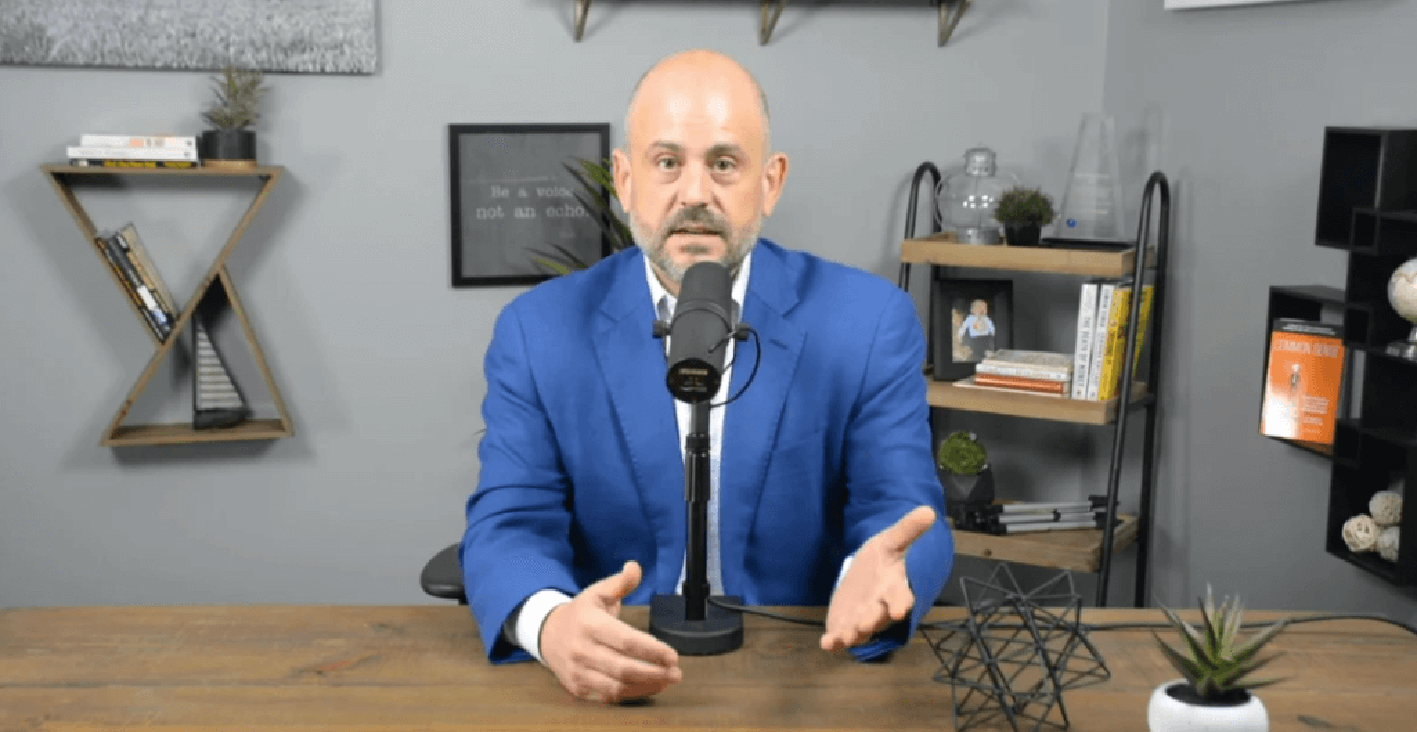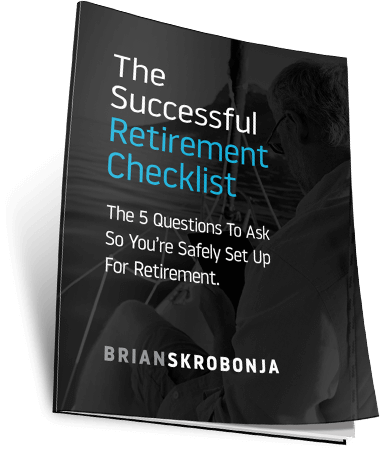There are serious issues facing pension plans today that you should be aware of and think about as you approach retirement.
Even if you are already drawing a pension payment, you may still want to tune in to what I have to say because even though you have already made your election, some of what I will share in this podcast may still impact your future benefits.
The reality is that pensions are becoming more and more of a dinosaur as companies are moving away from them and are replacing pensions plans with 401k type plans.
There are multitudes of reason why this shift is occurring, but the primary reason is due to the simple fact that pensions are unsustainable.
You pension is just one component of your retirement plan. How prepared are you? Click here to find out with this exclusive Retirement Checklist.
The Shift in Pension Plans
This was highlighted back in 2008 when GM was going through the economic crisis, we heard a lot about their drop in sales, government assistance and the problems plaguing the company, which ultimately drove them into bankruptcy.
This raised a lot of questions about the company’s financial state and uncovered the facts that not only were they employing around 170,000 people at the time, but they were also paying pension benefits to over 118,000 families.
That was 41% of their payroll going to people who were not contributing to the profits of the company. In other words, 59% of the payroll is working to generate the profits while the other 41% simply drew a check.
Now this is not a conversation about whether these folks are owed something for their time spent at a company or any of the arguments floating around in your head right now. This is strictly about the economics of what is happening with pension plans and the viability of these plans.
Pension had their hay day in the 1960s but began to fail opening the door for the government to enter the picture. They did what they do best and added promises and regulations to the programs.
The truth is, pensions have been struggling to keep their head above water ever since.
The point is that at one time pensions were as common as 401k’s are today. Many of our parents and grandparents worked forty years at the same job and then retired with a payment from the company for the rest of their life.
You see at that time, people commonly worked until they could no longer physically work and life expectancy was shorter than it is today.
So not only was a pension payment a way to entice older employees to rotate out of the company to make room for younger workers, life expectancy was shorter which meant the time frame for paying the pension was shorter than it is today.
Contrast that with the image we have of retirement today where it is not always a matter of not being able to work but rather a mindset of not wanting to work.
This means there are healthy and capable people choosing to retire early and drawing their pension while living another 30+ years.
An antiquated system
So, when you take an antiquated model of a pension and attempt to plug it into the current paradigm of retiring, you have a system that is riddled with problems.
Actuarial pensions are not calculated to support someone living thirty years, which jeopardizes their ability to make payments.
You get the big picture here but there are a few more facts to be aware of to make sure you understand what’s happening with pensions plans.
Pensions actuarially use age as part of their projections but they also have to assume rates of return on the money set aside to meet their pension obligations.
They have historically used 4.5% up to 7.5% to project earning. Now, when you consider the reality of interest rates being well below these percentages now for more than a decade, you can begin to see why these higher interest rate assumptions go a long way in improving the plans stated financial positions, but they do nothing to change their actual solvency.
Here is another fact; actuarially pensions look at a 10-year period for projecting the viability of their benefits. For comparison, Social Security projects the viability of benefits by looking at a 75-year period.
Now, a point to make here is that since most pensions are still popular with taxpayer funded government jobs, people are drawing benefits in their early fifties. Many of these people will draw benefits in retirement as long as they were working or possibly even longer.
Insolvent pensions
Now, what happens if a pension becomes insolvent and is unable to pay its promised benefits?
According to heritage.org, The Pension Benefit Guaranteed Corporation (PBGC), which is similar to the FDIC, did a study and found that for somebody that is promised $24,000 a year in pension benefits, they are insured up to $12,870.
The problem with these insurance plans for pensions is the same problem we have with the FDIC. The FDIC has around $25 billion in reserves, but there’s $9.3 trillion sitting in banks. The insurance cannot cover all the liabilities that exist.
The same thing is true with PBGC. The promise of insurance benefits is not mathematically supported. If PBGC goes insolvent, that $12,870 promise is really only able to cover $1,500 under the insurance benefit.
The concern here is that when you retire and plan on a pension as part of your income, and the system were to default, what do you do?
Studies show that back in 2008 the projected deficit for pensions was $5 million and in 2014, it was $42 billion. From 2008 to 2014 it went from a $500 million deficit projection to a $42 billion deficit.
All of this makes a strong case for accepting lump sum options when they are offered to move the control of your future benefits into your hands.
…A side note here…when I speak of solvency issues, I am not suggesting that the pension will become insolvent. As I explained early, I am simply stating that there are serious problems with the viability of pensions that should be cause for concern.
Pension Plan Options
Now, not all pensions plans have lump sum options. Some only offer a monthly payment, which leaves you with fewer options for your retirement planning.
If that is you, here are a few things to consider when making your annuity decisions.
When looking at your options, it can be viewed as a race to get the most out of the pension before any potential solvency problems occur.
This is certainty not the only factor for you to consider if you’re married and considering survivor benefits but this reality should highlight a need to find ways to move things into your control.
A single life annuity option is often your highest monthly benefit that pays a benefit to one person for their lifetime.
Electing this option will be the fastest way to get the most from the pension in the shortest period of time.
However, a single life option can leave a spouse exposed to an income shortage if the pension recipient dies since the pension stops at their death.
That is why if you are married and choose to take this election, your spouse must sign off on that decision.
Often times when a single life option is elected, this decision includes the purchase of a life insurance policy.
This allows for the maximum benefit to be received from the pension system while the proceeds from the policy create a new stream of income to replace the pension when death occurs.
This approach easily remedies the gap in pension benefits and moves more of your future into your control.
Reduced Pension Benefits
Of course you can elect to take a reduced pension benefit to cover your spouse and is likely your best option if you are uninsurable and cannot qualify for life insurance.
If you choose to take a reduced benefit there are some things you should be aware.
First of all, you will receive a lower monthly annuity payment. The amount of the reduction will vary from plan to plan but suffice it to say that it will be less than if you accepted a single life payment.
Another consideration is that if your plan has a cost of living adjustment built into it, which is designed to increase your benefits each year to keep up with inflation, this increase will be less with a reduced benefit.
So, you want to know and understand the effects of this over time.
If your maximum benefit amount is $5,000 per month, and a reduced spousal benefit is $4,000 per month, you are giving up $1,000 per month to protect your spouse.
If you consider the cost of living adjustment calculation and assume 3% as the inflation figure, you have $30 per month difference in your year two payment and that number increases over time.
If you project the difference out 20 years, that monthly difference grows to over $1,800 per month.
So, it is important to understand the escalating cost of opting for this benefit and the fact that the benefit you are paying for is decreasing over time since both you and your spouse are growing older.
In other words, each year that passes is one less year the surviving spousal benefit is received.
When you think about this carefully what you’ll figure out is that when electing for a spousal benefit you are accepting an arrangement where you are paying an increasing monthly premium for a decreasing benefit.
Another issue here with this pension plan option is that this benefit only extends to a spouse so no benefit is left for children or grandchildren unless you choose a child as the beneficiary and leave your spouse out.
So a quick review:
- The cost of the policy goes up each year, since the COLA (cost-of-living adjustment) received on the maximum benefit is greater than what is received on the reduced benefit.
- When taking a reduced spousal benefit, the benefit continues to go down each year you and your spouse are alive, making the number of years the benefit may be received less each year that passes.
- You disinherit your family, since the benefits are not transferrable to your heirs.
In my experience many retirees think the reduced benefit is the preferred choice to protect their spouse until they learn the cost that goes along with making that election.
What I have found is that once this is explained and its understood that you can take a maximum benefit and purchase a life insurance policy outside of the pension system to protect both their spouse and their heirs, they often elect to take the maximum benefit.
Keep in mind that this takes careful planning and the use of carefully crafted life insurance policies but the point with all of this information is to help you understand your options.
It is all too common to find people making decisions about their pension without fully understanding the bigger economic picture of what is actually happening.
In addition, there is a new reality that exists today that is influencing and forming a new retirement and if you are not paying attention, you may find yourself taking on more risk than you realize.
Your Financial Future
There are approximately 10,000 baby boomers retiring everyday over the next 15+ years.
On the surface, you may think that this has nothing to do with you and your situation but the reality is that as these Baby Boomers retire, there’s increasing pressure on social security, pensions and the stock market.
This is important to understand because there are more and more retirees drawing from the same sources of assets that you are relying on for your retirement.
The question I will leave you with to consider is, how do you think this will impact the viability of these programs and your future benefits?
With all that said, my team and I are here to help you feel more confident about your financial future.
That’s why we’ve created a community of people just like you who want to think differently about money, create their retirement mindset, and reach their goals.
If you’re not already following me on Facebook, YouTube, Instagram and LinkedIn, and if you’re not already subscribed to our Forbes Top 10 Rated Podcast, The Common Sense Financial Podcast, take time to do that right now.
And if you have specific questions, or are looking for an advisor to help you through the maze of investing and financial planning strategies, reach out to us here on our website.
Securities offered through Kalos Capital, Inc., Member FINRA/SIPC/MSRB and investment advisory services offered through Kalos Management, Inc., an SEC registered Investment Advisor, both located at11525 Park Wood Circle, Alpharetta, GA 30005. Kalos Capital, Inc. and Kalos Management, Inc. do not provide tax or legal advice. Skrobonja Financial Group, LLC and Skrobonja Insurance Services, LLC are not an affiliate or subsidiary of Kalos Capital, Inc. or Kalos Management, Inc.
Benefits and guarantees are based on the claims paying ability of the insurance company.
References
- https://www.heritage.org/jobs-and-labor/report/bankrupt-pensions-and-insolvent-pension-insurance-the-case-multiemployer
- https://demonocracy.info/infographics/usa/fdic/fdic.html
- http://www.pensionrights.org/sites/default/files/docs/gm_press_release_frequently_asked_questions_6-12.pdf
- https://www.thebalance.com/the-history-of-the-pension-plan-2894374
- https://www.google.com/search?biw=1415&bih=826&ei=GRGeXdD7L8-HggeFsraIDQ&q=number+of+gm+emplyees&oq=number+of+gm+emplyees&gs_l=psy-ab.3..0i13i70i251j0i13l4j0i13i30l5.98918.102042..102189…0.4..0.118.2136.7j14….3..0….1..gws-wiz…….0i71j0i273j0j0i67j0i22i30j0i70i251.cQYj1QQdZi4&ved=0ahUKEwiQ7L7D0o_lAhXPg-AKHQWZDdEQ4dUDCAs&uact=5







